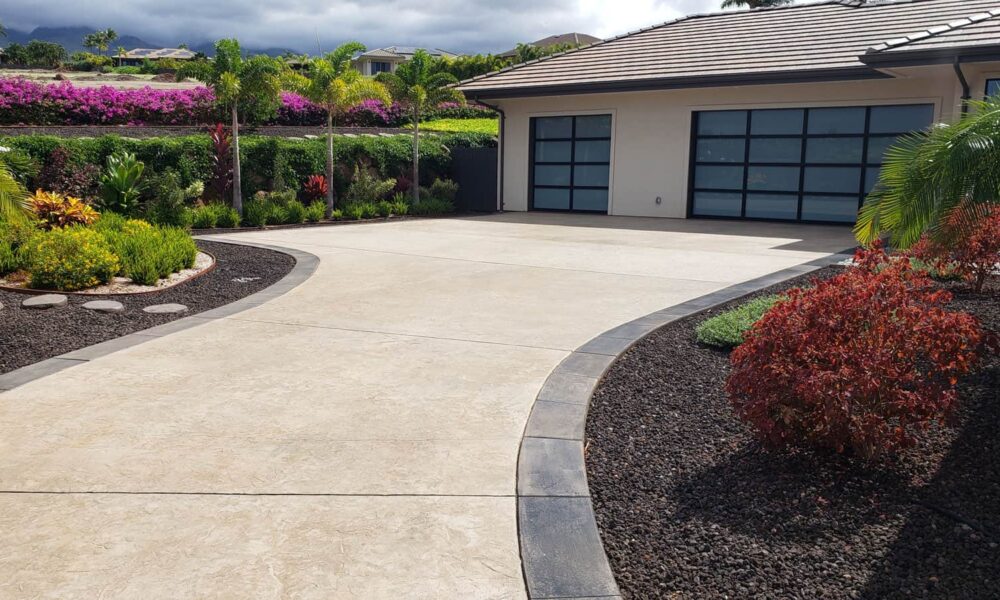How to Install a Concrete Driveway: A Step-by-Step Guide

Installing a concrete driveway is a practical home improvement project that can boost our property’s functionality and appearance. To successfully install a concrete driveway, we need to follow specific steps such as preparing the site, pouring the concrete, and finishing the surface properly. We can achieve a durable and attractive result with the right tools and some know-how.
As we walk through this process, we’ll highlight key techniques and common pitfalls to avoid, ensuring our project runs smoothly. In this guide, we’ll share insights that come from experience and knowledge, just like what we learned from experts such as Concrete London. Whether we are experienced DIYers or tackling our first concrete job, this post will provide all the information we need to get started.
Planning and Preparation
Before we start pouring concrete, we need to plan and prepare carefully. This ensures that every step of the installation goes smoothly, from understanding legal requirements to choosing the right materials.
Understanding Local Building Codes and Permits
Before we begin, we should check our local building codes. These regulations determine the standards for construction in our area. We may need to obtain a permit, especially for larger projects. It’s vital to contact our local building department to find out what is required.
- Permit Requirements: Permits can vary significantly based on location.
- Setbacks: Many areas have rules about how far our driveway should be from the property line.
- Construction Standards: There may be guidelines on the thickness of concrete or reinforcements like rebar or wire mesh.
Being informed will help us avoid any legal issues later.
Design and Layout Planning
Next, we need to think about the design and layout of the driveway. Making a detailed plan helps us visualize the project and estimate materials needed.
- Dimensions: We should measure the area where the driveway will go.
- Shape: Decide if we want a straight driveway or one with curves.
- Drainage: Plan for drainage to prevent water pooling. We can consider slight grading away from the house.
Sketching our design on paper can help in visualizing the final outcome. This step allows us to identify any potential issues early.
Selecting Quality Materials and Tools
Choosing the right materials and tools is crucial for a successful installation. The main material will be the concrete mix. We need to select a mix suitable for driveways for durability.
- Concrete Mix: Look for mixes labeled for structural use.
- Rebar and Wire Mesh: Reinforcement is essential. Using rebar or wire mesh can prevent cracking.
- Tools: We should gather tools like shovels, a screed board, and mixers. Having the right equipment can make our work easier and more efficient.
As we choose materials, we should consider factors like weather conditions and how often we plan to use the driveway.
Foundation and Subgrade
To ensure a sturdy and long-lasting concrete driveway, proper preparation of the foundation and subgrade is essential. We will focus on excavation, creating a gravel base, and setting up forms along with reinforcement.
Excavation and Compaction
We start by removing any vegetation, rocks, and debris from the area where the driveway will be installed. This step is crucial to avoid future settling or cracking.
After clearing the area, we excavate to the required depth, typically about 4 to 6 inches. This depth provides enough space for a gravel base and concrete slab. Once we’ve excavated, we must compact the soil. Using a compactor or compacting machine, we make sure the subgrade is solid and even. Proper compaction reduces the risk of concrete failure and provides a stable foundation for the driveway.
Creating a Gravel Base
With our subgrade compacted, we can now lay the gravel base. We recommend using crushed stone or gravel, which allows for proper drainage and support. The gravel should be about 4 inches thick and evenly distributed across the area.
It’s important to rake the gravel to create a level surface. After laying it down, we should compact the gravel as well, using a compactor again. This step ensures that the gravel stays in place and provides firm support for the concrete slab. The well-prepared gravel base helps to prevent future shifts and cracks in our driveway.
Setting Up Forms and Reinforcement
Next, we move on to setting up forms to hold the concrete in shape. We typically use wooden boards or metal forms, ensuring they are securely staked into the ground. The forms must be level and aligned with the desired edges of the driveway.
To enhance strength, we should lay reinforcement mesh or rebar within the forms. Steel reinforcement provides added support and reduces the likelihood of cracks. Placing the mesh about halfway up in the concrete thickness is ideal. After ensuring everything is level and secure, we are ready to pour the concrete, confident that our foundation and subgrade are well-prepared for a durable driveway.
Pouring and Finishing the Driveway
In this section, we will discuss the essential steps for pouring and finishing a concrete driveway. Our focus will be on mixing and pouring concrete, leveling and smoothing, and applying finishing touches for a strong and attractive surface.
Mixing and Pouring Concrete
To begin, we gather our materials: cement, aggregates, water, and any additives needed for strength. We can mix concrete in a concrete truck or with a portable mixer. The right mix should have a consistency similar to thick oatmeal.
Next, we use a wheelbarrow to transport the mixed concrete to the work area. We pour the concrete into the prepared forms, ensuring it fills all corners. It’s essential to work quickly to prevent the mix from setting before we finish.
Leveling and Smoothing Techniques
Once the concrete is poured, we use a screed board to level the surface. This tool helps us strike off excess concrete and create a smooth, even finish. We move the screed board back and forth while pulling it across the forms.
After leveling, we employ a bull float to smooth the surface further. This helps remove any imperfections. We let the concrete sit for a little while to firm up slightly, then use a magnesium hand float for finer finishing. This step ensures a nice, polished look.
Applying Finishing Touches and Textures
After leveling and smoothing, we decide on our finish. A broom finish adds texture, improving traction. We can achieve this by lightly dragging a broom across the surface at a consistent angle.
Before the concrete sets completely, we should cut control joints to prevent cracking. These joints help manage the natural expansion and contraction of the concrete. We aim for a thickness of at least 4 inches for durability. Finally, curing the concrete properly is crucial; we need to keep it moist for several days for optimal strength.
Curing and Maintenance
To ensure our concrete driveway lasts, we need to focus on both curing and maintenance. Proper curing enhances the concrete’s durability, while regular maintenance keeps it in good condition over time.
Curing Process for Durability
Curing is critical for achieving strong and durable concrete. We should aim to keep the surface moist for at least 7 days after pouring. This helps the concrete gain strength and reduces the risk of cracking.
We can use methods like covering the area with wet burlap, applying a curing compound, or using plastic sheeting. The ideal temperature for curing concrete is between 50°F and 80°F.
During this period, we should avoid heavy traffic and extreme weather. Waiting for the curing process to finish helps maximize the longevity of our driveway.
Long-Term Maintenance Practice
Once our driveway has cured, we can implement maintenance practices to keep it looking great. Regular cleaning is essential. Sweeping or washing the surface helps prevent stains and debris from damaging the concrete.
We should consider applying a concrete sealer every couple of years. Sealers protect against water damage and other contaminants, which can lead to cracking.
If we notice cracks, we must address them quickly to prevent further issues. Filling cracks with a suitable repair product will help maintain the integrity of the surface.
By following these practices, we can enhance the lifespan and durability of our driveway.
Read more from techbullion





